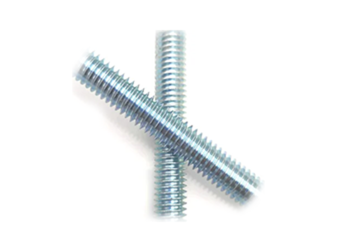Aug . 13, 2024 12:10 Back to list
19mm Hex Nut Specifications and Applications for Various Mechanical and Construction Projects
Understanding the 19mm Hex Nut A Crucial Component in Fastening Technology
When it comes to mechanical engineering and construction, fasteners play an essential role in ensuring the integrity and stability of structures and machinery. Among various fasteners, the hex nut is one of the most commonly used components, known for its reliability and ease of use. In this article, we will explore the significance of the 19mm hex nut, its applications, and its benefits.
What is a Hex Nut?
A hex nut is a six-sided (hexagonal) fastener that is internally threaded, designed to fit onto a corresponding bolt or screw. The hexagonal shape allows for easy gripping and tightening using a wrench, making it a staple in various industries including automotive, construction, and electronics. The size of a hex nut is typically measured by the diameter of the bolt it is meant to accommodate. In this case, a 19mm hex nut corresponds to a bolt with a nominal diameter of 19mm.
Dimensions and Specifications
The dimensions of a hex nut are crucial for its performance
. A standard 19mm hex nut usually has a height of approximately 10mm and a thread pitch that varies based on the specific application. It’s essential to select the right thread pitch (fine or coarse) for the intended use, as this affects the nut's gripping power and overall security.Materials used in the manufacturing of hex nuts can range from carbon steel and stainless steel to nylon and brass, each providing different levels of strength, corrosion resistance, and weight. For instance, stainless steel hex nuts are often used in applications where corrosion resistance is critical, while carbon steel nuts are preferred for heavier loads and structural applications.
Applications of the 19mm Hex Nut
19mm hex nut

The 19mm hex nut finds applications across a multitude of sectors. In the automotive industry, they are commonly employed in engine assembly, suspension systems, and chassis installations. Their ability to maintain tightness under varying temperatures and physical stress makes them ideal for use in vehicles that endure significant movement and strain.
In construction, 19mm hex nuts are often used in conjunction with bolts to secure beams, girders, and other critical structural components. The combination of these fasteners ensures that loads are evenly distributed and helps to maintain the structural integrity of buildings and bridges.
Furthermore, in the realm of electronics, these nuts can be found in various assembled devices, ensuring connectivity and stability in electronic circuits.
Advantages of Using Hex Nuts
One of the primary advantages of hex nuts, including the 19mm variant, is their ease of installation and removal. The hexagonal shape allows for the use of standard tools, which simplifies maintenance and repair processes. Additionally, hex nuts are less likely to loosen over time compared to other fastener types, thanks to their design which provides significant friction against rotation.
Moreover, they offer versatility in terms of compatibility with various bolts, making them an ideal choice for multi-purpose applications. Their availability in different materials and finishes also provides options for specialized environments, such as marine settings where rust resistance is paramount.
Conclusion
In summary, the 19mm hex nut is an indispensable component of modern engineering and construction. Its design and functionality provide significant support for a variety of applications, ensuring that structures and machinery remain safe and effective. As industries continue to evolve, the importance of reliable fasteners like the hex nut will only increase, underpinning the necessity for quality and precision in every fastening solution. Whether you are an engineer, builder, or DIY enthusiast, understanding the significance of the 19mm hex nut can greatly enhance the performance and longevity of your projects.


